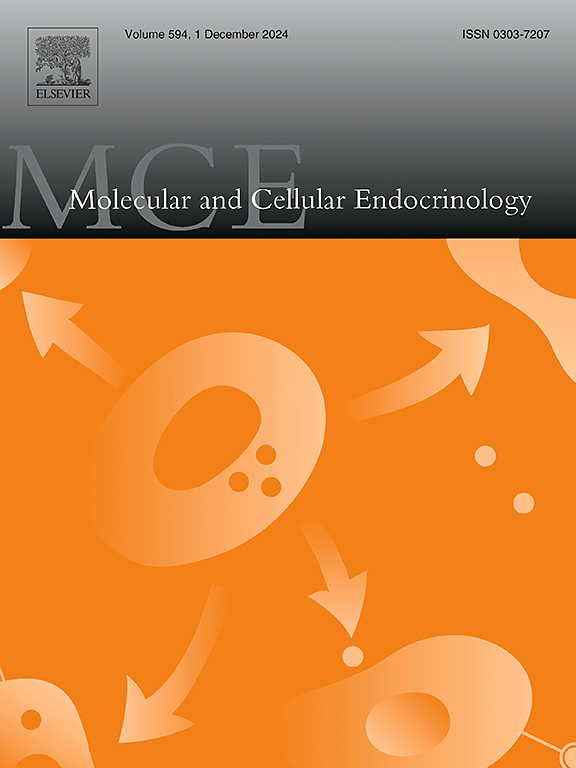西马鲁肽对胰岛素抵抗肌管模型线粒体功能和胰岛素敏感性的影响
IF 3.6
3区 医学
Q2 CELL BIOLOGY
引用次数: 0
摘要
SEMA (SEMA)是一种胰高血糖素样肽-1受体激动剂(GLP-1RA),由于其减肥特性,最近成为2型糖尿病和胰岛素抵抗的流行药物治疗。以前的研究已经使用超药代动力学(但不是药代动力学可达到的)浓度检测了SEMA的代谢作用。本研究的目的是确定药代动力学可达到的SEMA水平对线粒体功能和代谢的代谢影响,这在胰岛素抵抗期间通常会降低。方法sc2c12肌管用10 nM的SEMA处理24 h,该浓度接近体内药代动力学可达到的血药浓度。采用qRT-PCR检测代谢基因表达。Western blot检测pAkt表达。海马代谢测定也用于测定线粒体和糖酵解代谢。荧光染色测定线粒体和脂质含量。结果SEMA治疗未改变线粒体功能、含量或相关基因表达。同样,SEMA对糖酵解代谢或相关基因表达没有显著影响,也没有改变细胞脂质含量或脂肪生成信号。结论:在体外实验中,高浓度SEMA可能促进线粒体功能,但本报告的研究结果表明,可达到的SEMA药代动力学水平不会改变肌管代谢或相关分子靶点的表达。本报告与过去观察结果的差异可能是由于本实验中使用的SEMA浓度较低所致。进一步的体内研究将有必要阐明SEMA对骨骼肌的全面代谢作用。本文章由计算机程序翻译,如有差异,请以英文原文为准。
The effect of Semaglutide on mitochondrial function and insulin sensitivity in a myotube model of insulin resistance
Aims
Semaglutide (SEMA) is a glucagon-like peptide-1 receptor agonist (GLP-1RA) that has recently emerged as a popular pharmacological treatment for type 2 diabetes and insulin resistance due to its weight loss properties. Previous studies have examined the metabolic effects of SEMA using supra-pharmacokinetically (but not pharmacokinetically attainable) concentrations. The aim of the present study was to determine the metabolic effects of pharmacokinetically attainable levels of SEMA on mitochondrial function and metabolism, which are often reduced during insulin resistance.
Methods
C2C12 myotubes were treated for 24 h with SEMA at 10 nM which approximates pharmacokinetically attainable blood concentrations in vivo. Metabolic gene expression was measured using qRT-PCR. pAkt expression was assessed using Western blot. Seahorse metabolic assays were also used to measure mitochondrial and glycolytic metabolism. Fluorescent staining was used to assess mitochondrial and lipid content.
Results
Treatment with SEMA did not alter mitochondrial function, content, or related gene expression. Similarly, SEMA had no significant effect on glycolytic metabolism or related gene expression, nor did it alter cellular lipid content or lipogenic signaling.
Conclusions
High concentrations of SEMA may promote mitochondrial function during in vitro experiments, however the findings from the present report suggest pharmacokinetically attainable levels of SEMA do not alter myotube metabolism or expression of related molecular targets. Disparities in the present report and past observations may be a result of the lower concentrations of SEMA used in the present experiments. Further in vivo studies will be necessary to elucidate the full metabolic effects of SEMA on skeletal muscle.
求助全文
通过发布文献求助,成功后即可免费获取论文全文。
去求助
来源期刊

Molecular and Cellular Endocrinology
医学-内分泌学与代谢
CiteScore
9.00
自引率
2.40%
发文量
174
审稿时长
42 days
期刊介绍:
Molecular and Cellular Endocrinology was established in 1974 to meet the demand for integrated publication on all aspects related to the genetic and biochemical effects, synthesis and secretions of extracellular signals (hormones, neurotransmitters, etc.) and to the understanding of cellular regulatory mechanisms involved in hormonal control.
 求助内容:
求助内容: 应助结果提醒方式:
应助结果提醒方式:


